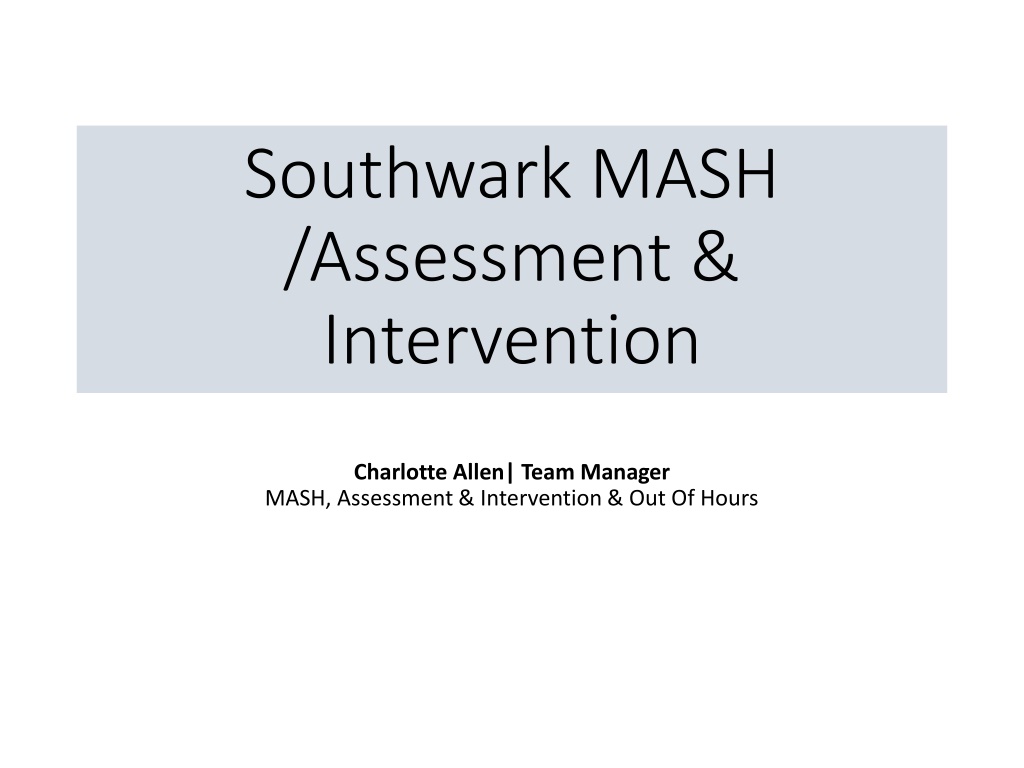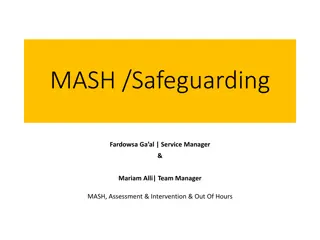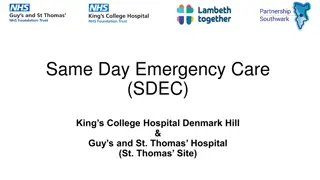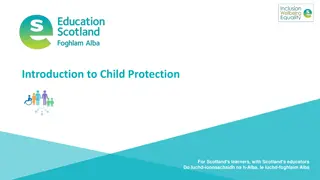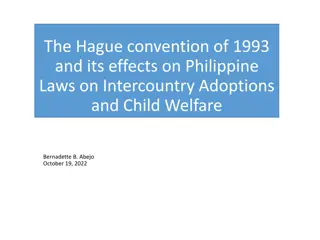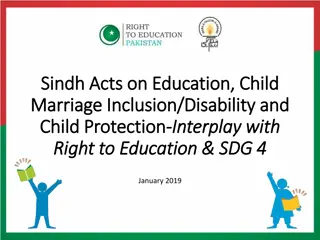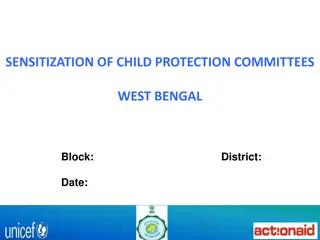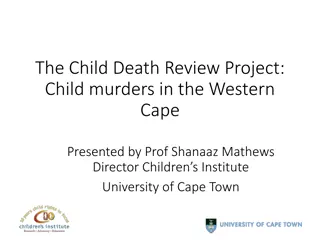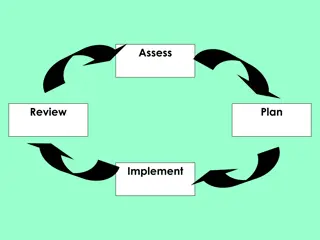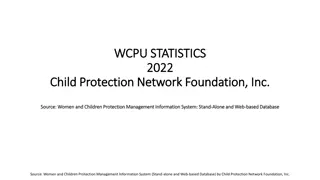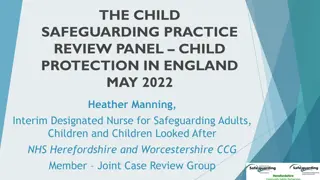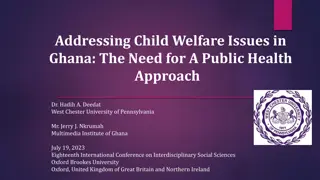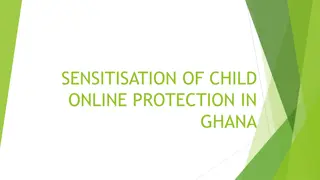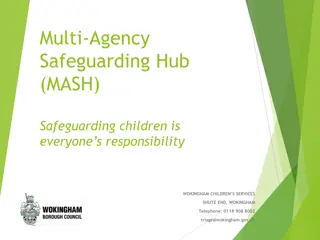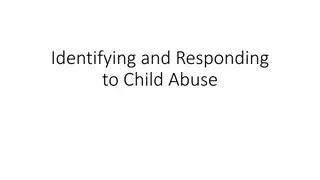Enhancing Child Protection Services in Southwark MASH through Collaboration
The Southwark Multi-Agency Safeguarding Hub (MASH) emphasizes the importance of better communication, joint working, and information sharing to safeguard children. By implementing MASH principles and involving various partner agencies, including social care, police, health services, and more, MASH strives to provide early help to families in need, reducing the necessity for statutory interventions. The current working arrangements of Southwark MASH involve a hybrid model with office-based duty teams and virtual call centers to manage referrals and consultations efficiently.
Download Presentation

Please find below an Image/Link to download the presentation.
The content on the website is provided AS IS for your information and personal use only. It may not be sold, licensed, or shared on other websites without obtaining consent from the author. Download presentation by click this link. If you encounter any issues during the download, it is possible that the publisher has removed the file from their server.
E N D
Presentation Transcript
Southwark MASH /Assessment & Intervention Charlotte Allen| Team Manager MASH, Assessment & Intervention & Out Of Hours
Why ? The Victoria Climbi Inquiry, 2003- emphasised the need for better communication, better information sharing, joint working. The Children Act 2004- importance of safeguarding children, working together to promote the wellbeing of the child. (sections 10 and 11 places obligations on partner agencies) Serious Case Reviews for example: Daniel Pelka- 2013 https://www.lgiu.org.uk/wp-content/uploads/2013/10/Daniel-Pelka-Serious-Case-Review-Coventry- LSCB.pdf National review into the murders of Arthur Labinjo-Hughes and Star Hobson This report asserts that the child protection system must be strengthened, both locally and nationally. That does not mean that the child protection system is broken ; indeed there is good evidence that, every day, many thousands of children are protected from harm by conscientious, committed and capable social workers, police officers, health, educational and many other professionals.
MASH Principles The Multi-Agency Safeguarding Hub (MASH) model has led to more accurate assessment of risk and need at the front door of child protection, when it has been implemented well (Home Office, 2014). The MASH aims to promote the safety and welfare of children by providing better access to the information that will help to identify safeguarding risk, underpin a clearer understanding of need and then in turn, lead to effective, timely and proportionate interventions. MASH prioritise work, in order of risk, urgency and need. The MASH way of working ensures that children and young people have a better chance of receiving the service that is suitable for them, and we spot any potential problems earlier. Accurate case recording also helps us understand family history and past harm. The focus of the MASH is to work across partner agencies ensuring families receive early help in order to reduce the need for statutory intervention.
Who is in the MASH? Southwark Children s Social Care (1 SM, 4 TM 8 SWs, 1 BSM, 6 MIOs) Family Early Help Police Public Protection Unit (MASH Police) Community Health SLAM (Adult Mental Health) CAMHS (child adolescent mental health service) Solace Women s Aid (Domestic Abuse) Youth Justice Service Probation Housing Department CGL (Change Grow Live ) Hidden Harm/substance abuse Worker
Current Working arrangements MASH and most other Children's Services teams in Southwark continues currently use hybrid working model. MASH duty and the Assessment duty teams are office based. We have a virtual call centre which enables us to manage calls from home. Referrals to MASH from professionals are received via our email inbox which is mash@southwark.gov.uk and police referrals come in via RAD inbox. MASH SWs provide consultation to professionals who are concerned for the welfare of children and are not sure whether to make a referral or not. The Consultation number is 0207 525 1921 and professional can dial this number and ask to speak to a duty Social Worker for a consultation.
Referral pathway and expectations Referral pathway and expectations on professionals making referrals on professionals making referrals All professional referrals received into MASH should be completed on a Southwark MASH referral form. Professionals must ensure that referrals sent in to MASH are appropriately filled out with all basic information including family composition, ethnicity and contact telephone numbers. Referrals for MASH should identify children in need of statutory help or protection. Requests for support eg where children are identified to have unmet needs or parents are in need of support should be sent to Family Early Help for consideration. If received in MASH, we send to FEH directly.
Consent and Information Sharing Professionals are expected to discuss their concerns with the parents or guardian of the children to explore parent s perspective, and to obtain consent. Referrals made without consent will be returned, unless urgent safeguarding concerns are identified, which override the expectation for a professional to seek consent A referral can be made without consent if: you have made all possible efforts to inform the parents, carers or young person over the age of 16 of the referral without success You have informed the parents, carers or young person about the referral, but they don t consent and you feel the child is at risk of significant harm Professionals should indicate the reason why consent has not been obtained in the referral and consider whether child protection threshold to override parental consent is met or contact MASH on 0207 525 1921 for consultation and advice.
Consent and Information Sharing Why is consent important? Families have a right to know what information is shared about them between professional organisations. Consent is important in building trust and better working relationships between professionals and parents. Quote from Crime Prevention Minister Norman Baker 2013 And I want to send a clear message today if it s a choice between data protection and child protection, child protection must come first. (2014).
Information Sharing Information Sharing Information sharing in the MASH is determined by the1989 and 2004 Children Act. The main legal gateway for cases being placed through the MASH is the 1989 Children Act whereby the MASH is used to determine if the Local Authority has a duty to assess (Section 17) if a child is in need and whether there is a statutory need to undertake a child protection investigation (Section 47). The 2004 Children Act, Section10 and 11 places an obligation on the Local Authority to cooperate with partner such as the police and NHS to promote the welfare of the child. MASH will often contact health professionals, education settings and other relevant professionals (partner agencies) as well as the referrer for further information before making a decision on whether an assessment should be undertaken or not. MASH work transparently with families and always try to seek consent to gather information from partner agencies.
Open Cases Assessment and Intervention Service continues to work with children and families in need of protection during this time with some slight changes to the way they work. Most practitioners continue to work from home All inquiries on cases that are open and allocated to a Social Worker should be made to our services by dialling 0207 525 1049 and asking to speak to the allocated Social Worker.
Threshold Tier 1: No additional needs These are children with no additional needs; all their health and developmental needs will be met by universal services. These are children who consistently receive child focused care giving from their parents or carers. The majority of children living in each local authority area require support from universal services alone. Tier 2: Early help These are children with additional needs, who may be vulnerable and showing early signs of abuse and/or neglect; their needs are not clear, not known or not being met. These children may be subject to adult focused care giving. This is the threshold for a multi-agency early help assessment to begin. These are children who require a lead professional for a co-ordinated approach to the provision of additional services such as family support services, parenting programmes and children s centres. These will be provided within universal or targeted services provision and do not include services from children s social care. Tier 3: Children with complex multiple needs These children require specialist services in order to achieve or maintain a satisfactory level of health or development or to prevent significant impairment of their health and development and/or who are disabled. They may require longer term intervention from specialist services. In some cases these children s needs may be secondary to the adults needs. This is the threshold for an assessment led by children s social care under Section 17, Children Act 1989 although the assessments and services required may come from a range of provision outside of children s social care. Tier 4: Children in acute need These children are suffering or are likely to suffer significant harm. This is the threshold for child protection. These children are likely to have already experienced adverse effects and to be suffering from poor outcomes. Their needs may not be considered by their parents. This tier also includes Tier 4 health services which are very specialised services in residential, day patient or outpatient settings for children and adolescents with severe and /or complex health problems. This is likely to mean that they may be referred to children s social care under section 20, 47 or 31 of the Children Act 1989. This would also include those children remanded into custody and statutory youth offending services.
What difference should MASH make ? Accurate assessment of risk and need, as safeguarding decisions are based on collaborative work between agencies. It should offer a proportionate and timely response to concerns that have come through to Children s Services (timeframe of 2 hours for RED, 1 working day for Amber and ideally up to 2 working days for Green) Least intrusive and interventionist approach. Earlier interventions and helps to decide what level of service provision is needed.
What makes a good referral? Who is in the family? (siblings in and outside of the home) Contact details for the family, demographics such as address , ethnicity, school information. Clearly document if you have informed the family of the referral, their views and if have obtained consent. Parental consent should never be a barrier to report safeguarding concerns however the rationale must be clear within the referral Referrals made in a timely manner (delay could increase risk and impact on response). State clearly the nature of the concern. Include as relevant much information as possible. If there is a mark/bruise to the child , please contact MASH as soon as possible.
